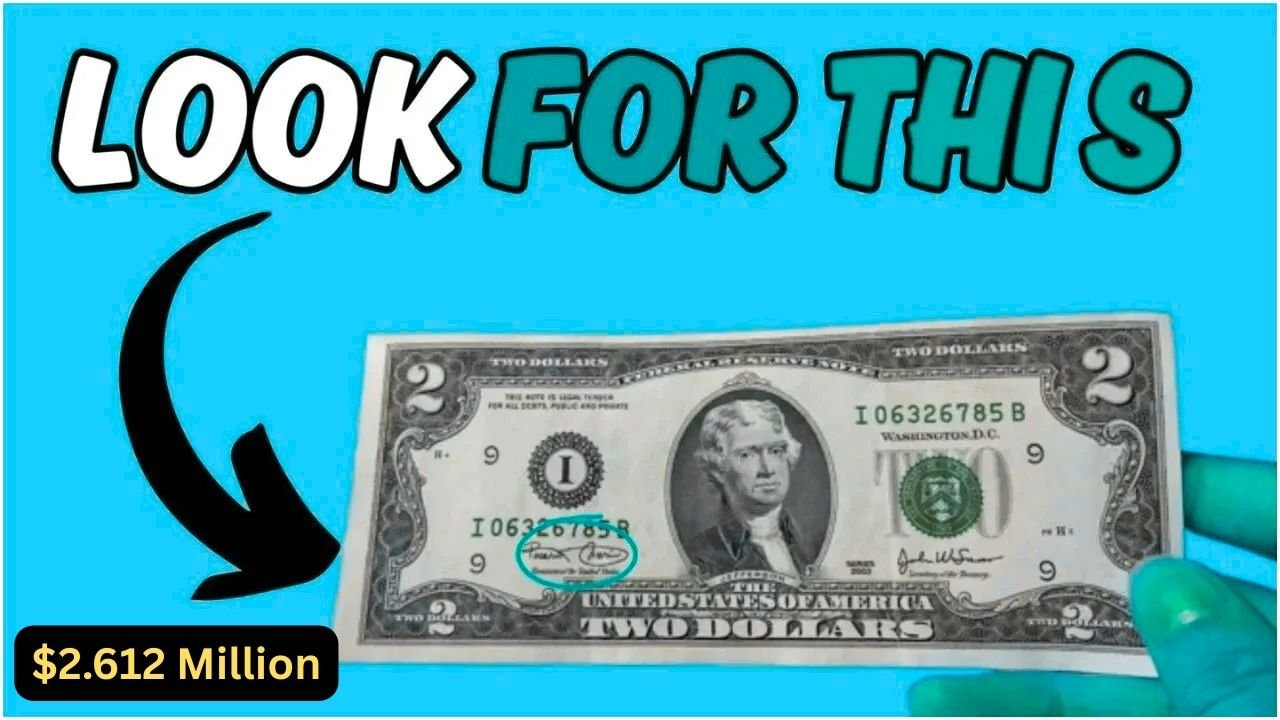A quick stop at a gas station turned into a life-changing moment for one lucky person in Texas. A customer received a $2 bill as change, thinking it was just an odd piece of money. After a closer look, experts confirmed it was a rare 1890 Treasury Note worth an incredible $2.612 million at auction. This amazing find has collectors excited and people everywhere checking their wallets for hidden treasures. Here’s how to spot a valuable $2 bill and what makes this one so special.
A Surprising Discovery
The story began at a small-town gas station in Texas. A customer paid for gas and got a $2 bill in their change. At first, it seemed like a neat keepsake, but its old look caught their attention. They shared a photo online, and a local collector suggested getting it checked. Experts at a grading service like PCGS confirmed it was a “Grand Watermelon” note from 1890, named for the large green zeros on its back that look like watermelons. Its rarity and great condition made it a collector’s dream.
Why This Bill Is Worth Millions
Not all $2 bills are valuable, but this one stood out. It’s from the 1890 Treasury Note series, with only a few still around. The bill’s red seal, low serial number, and near-perfect condition pushed its value to $2.612 million. Printing errors, like misaligned seals or inverted numbers, can also make a bill rare. According to Heritage Auctions, a similar bill sold for over $2 million in 2024, but this one’s pristine state set a new record.
| Feature | Details |
|---|---|
| Series Year | 1890 |
| Seal Color | Red |
| Serial Number | Low or unique |
| Condition | Near perfect |
How to Spot a Rare $2 Bill
You might have a valuable $2 bill in your wallet. Check the series year, usually printed on the front. Bills from before 1928, like 1890 or 1918, are rarer. Look for a red or brown seal instead of the common green one. Unique serial numbers, like repeating digits (22222222) or low numbers (00000001), add value. The bill’s condition matters too; crisp, clean bills with no folds are worth more. Use a magnifying glass to spot errors like misaligned prints.
| Valuable Trait | Why It Matters |
|---|---|
| Old Series Year | Pre-1928 bills are scarce |
| Red Seal | Less common than green |
| Unique Serial | Low or repeating numbers boost value |
| Pristine Condition | No folds or tears increase worth |
What to Do If You Find One
If you think you’ve got a rare $2 bill, handle it carefully. Don’t fold or clean it, as that can lower its value. Store it in a protective sleeve and take it to a professional appraiser or grading service like PCGS or PMG. They’ll check its authenticity and condition. You can also research similar bills on auction sites like Heritage Auctions to get an idea of its worth. Check your change, old wallets, or family collections for these hidden gems.
A Lesson in Everyday Treasures
This $2 bill’s journey from gas station change to a $2.612 million auction sale shows that treasures can hide in plain sight. The U.S. Treasury still prints $2 bills, but they’re uncommon in daily use, making people think they’re rare. Older bills, especially from the 1800s or early 1900s, can be worth thousands or millions. This story has sparked a nationwide hunt for rare currency, reminding everyone to look closely at their cash.
Could You Be Next?
The Texas gas station find proves that life-changing discoveries are possible in everyday moments. Whether it’s change from a store or an old bill in a drawer, a rare $2 bill could be waiting. Next time you get cash, take a second to check for unusual features. You might just find a piece of history worth a fortune, like the Grand Watermelon note that turned a routine day into a million-dollar story.
